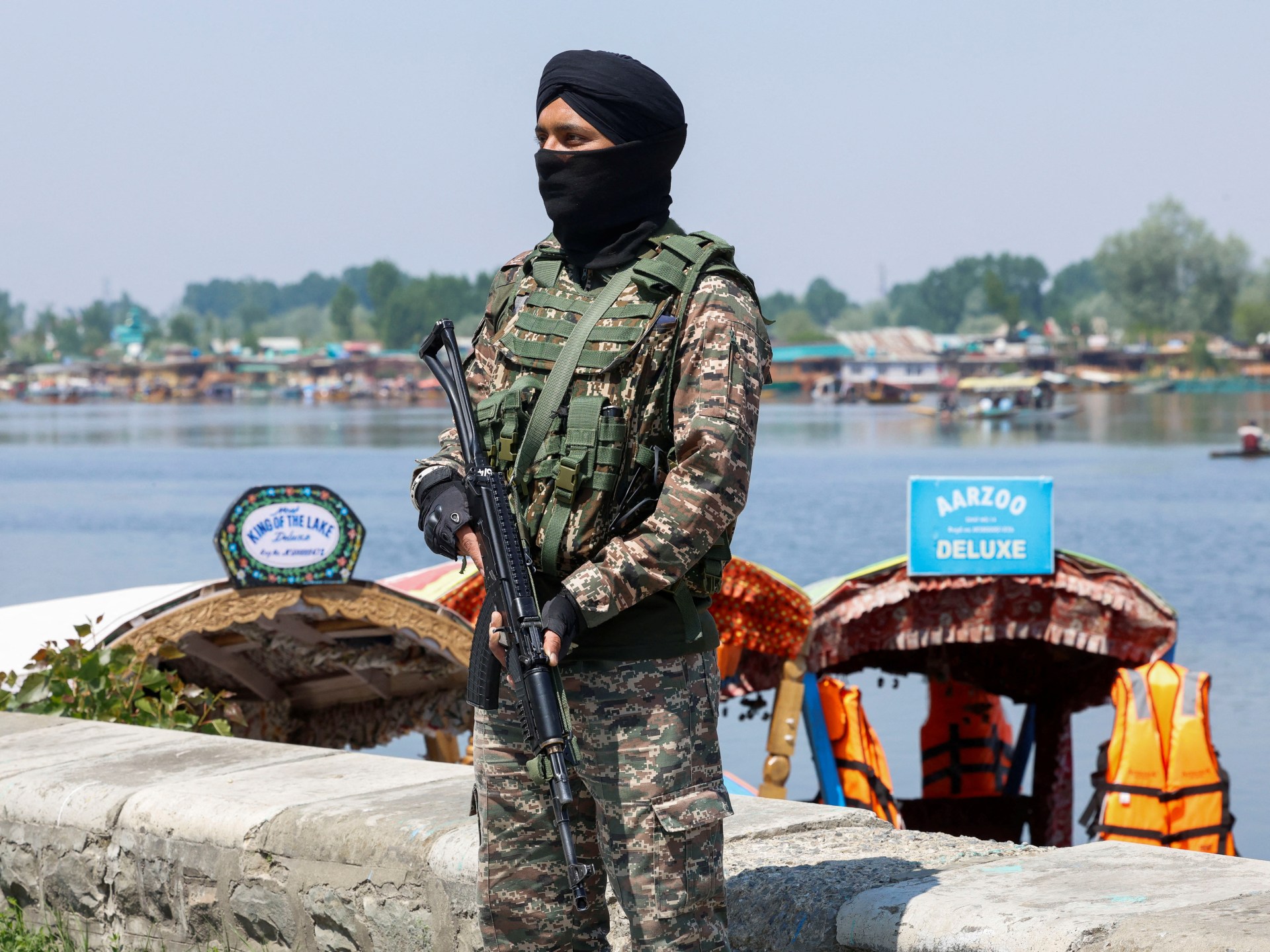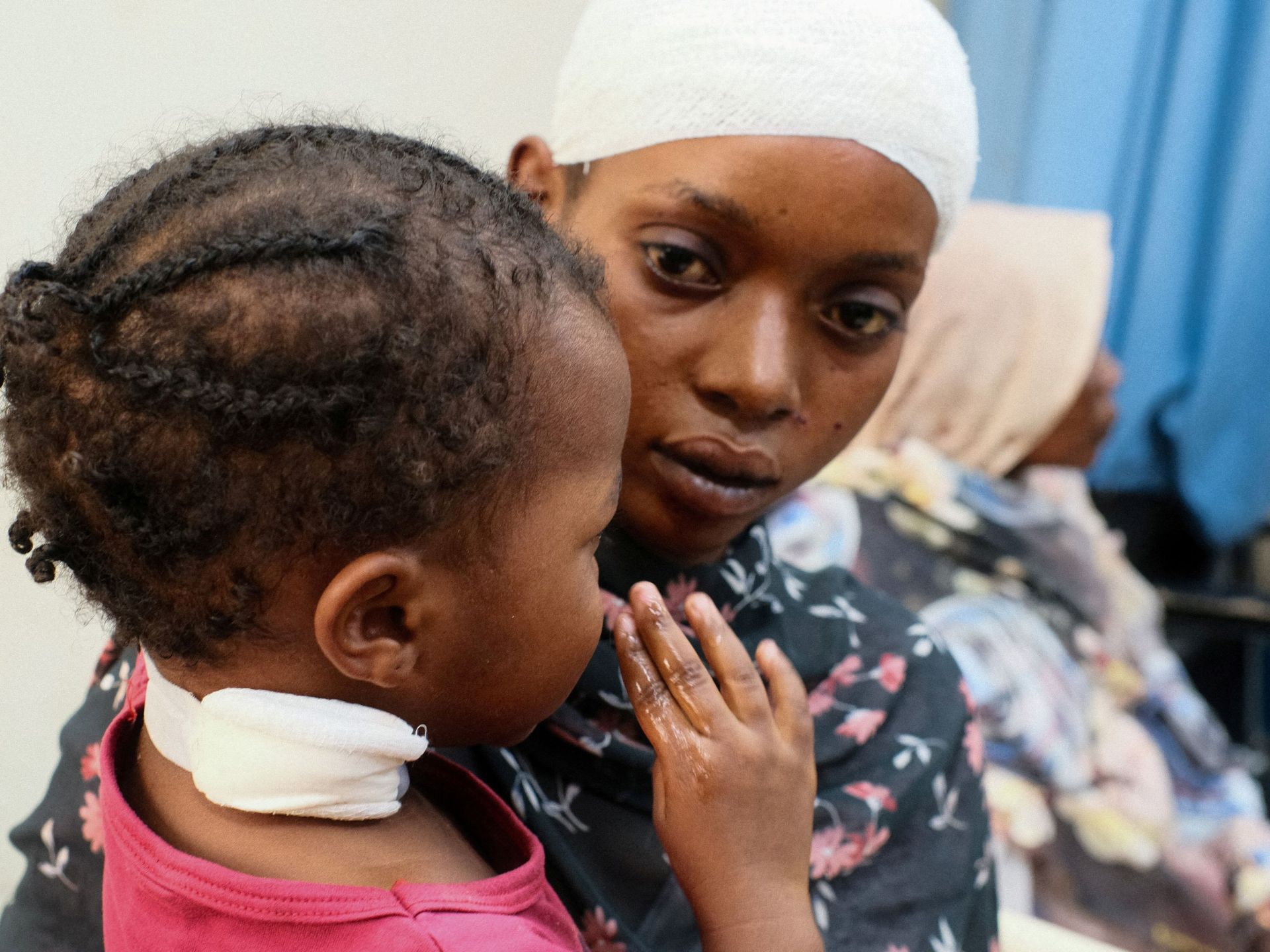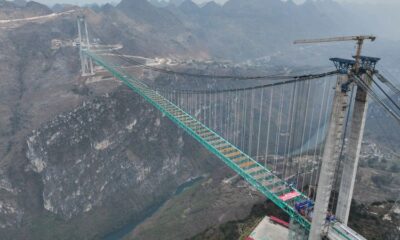Conflict Zones
‘We’re cursed’: Kashmiris under attack across India after Pahalgam killings | Armed Groups News
New Delhi, India – Walking through the narrow and crowded lanes of Jalandhar, a city in the northern state of Punjab, *Aasif Dar suddenly realised that “all eyes were on me”.
And they weren’t friendly gazes.
“I felt like every single person in the crowd had vengeance in their eyes,” recalled Dar.
As Dar and a friend stopped by an ATM, two unknown persons approached them, asking about their ethnicity. They panicked and ran away. The next morning, on April 23, Dar left his house to buy milk. “Three men saw me and hurled Islamophobic slurs,” said Dar. “One of them shouted, ‘He is a Kashmiri, everything happens because of them.’”
On Tuesday, April 22, gunmen opened fire on tourists in Kashmir’s resort town of Pahalgam, killing 26 tourists and injuring a dozen others.
Yet, even as New Delhi has blamed Pakistan for the attack, which was claimed by an armed group seeking secession from India, the killings have also opened up the country’s religious and ethnic fault lines.
As Indian government forces continue to hunt for the attackers in Kashmir’s dense jungles and mountains, Kashmiris living across India, especially students, have reported heckling, harassment and threats by far-right Hindu groups – or even their classmates.
From Uttarakhand, Punjab, to Uttar Pradesh, landlords are pushing Kashmiri tenants out; and shopkeepers are refusing to trade with them. Several Kashmiri students are sleeping at airports as they try to make their way home.
Someone else carried out the deadly attack. “And we are now left here to pay the price,” said Dar.

‘Mistrust everywhere I look’
The disputed region of Kashmir is claimed in full, but ruled in parts, by both India and Pakistan.
New Delhi has accused Islamabad of indirect involvement in “cross-border terrorism” and the Pahalgam attack. Pakistan refutes the allegations and says it only provides moral and diplomatic support to Kashmiri nationalism. It has said that India has not provided any evidence of Pakistan’s involvement in the Pahalgam attack, which has left the nuclear-armed neighbours locked in a tense standoff: New Delhi has walked out of a water-sharing treaty; both nations are expelling each other’s citizens and are scaling back the diplomatic strengths of their missions in each other’s capitals.
But inside India, Kashmiris are bearing the brunt of the anger over Tuesday’s attack.
Nearly a dozen Kashmiris who spoke with Al Jazeera, all on condition of anonymity, said they have locked themselves inside their rooms in at least seven cities of India, and avoid any outside contact, including placing online orders or booking cabs.
Dar is a second-semester student of anaesthesia and operation theatre technology in Jalandhar. It is the first time Dar has left his parents, and Kashmir, to pursue higher education.
“There are no opportunities in Kashmir, and I want to study hard for my future,” he said in a phone interview. “If I do well here, I will be able to support my family.”
But the reality is sobering for him. With his term exams breathing down his neck, Dar said he has grown anxious and depressed. “I have forgotten everything that I have learnt in these months,” he said. “There is a constant uncertainty – I may stay non-attendant [at class]; go back to my home, I don’t know, my head just does not work.”
“There is mistrust everywhere I look,” he said. “We are also cursed because our face and features give away our ethnicity.”
Soon after the attack, multiple survivor accounts emerged, suggesting that the gunmen separated the attacked tourists by religion. Of the 26 people killed, 25 were Hindu men.
But largely missed in the tornado of anti-Kashmiri and anti-Muslim hate that has taken over Indian social media since Tuesday, was the identity of the 26th person killed: a Kashmiri Muslim man who tried to stop the attackers from murdering the tourists.
“Today’s India runs high on xenophobic propaganda and that has been unleashed for some years now; most of it is against Muslims,” said Sheikh Showkat, a political analyst and academic based in Kashmir.
“Kashmiris bear a double weight: of being a Kashmiri – and a Muslim,” he said. “They are always the easy targets.”

‘Give this treatment to Kashmiri Muslims’
Nearly 350km (217 miles) away from Jalandhar, in Dehradun, the capital of Uttarakhand state, the leader of a far-right Hindutva outfit issued a chilling warning on Tuesday.
“We won’t wait for the government to take action … Kashmiri Muslims, leave by 10am, else you will face action you can’t imagine,” Lalit Sharma, the leader of the Hindu Raksha Dal said in a video statement. “Tomorrow, all our workers will leave their homes to give this treatment to Kashmiri Muslims.”

Similar warnings were soon hitting the social media feed of *Mushtaq Wani, a 29-year-old Kashmiri student in the city.
Pursuing his master’s in library science, Wani, who is older than most Kashmiri students in the city, started receiving panicked calls from others. “We took the threats seriously,” he said.
There is a history of violence against Kashmiris in the region: soon after the deadly suicide bombing attack in 2019 in Pulwama, which killed at least 40 paramilitary personnel, Kashmiri students were hunted down in Dehradun, beaten up, and forced back home. Several did not return to the city.
“This is what our life is like,” Wani lamented. “This happens again and again – why cannot India finish the militants in one go? They have so many troopers and the [number of] militants [is] so less … someone kills someone and our lives are upended.”
Since the threats, Wani has coordinated at least 15 students’ travel back to Kashmir. As for himself, he is sitting tight, locked inside a friend’s home, preparing for his term exams from next week. “We are scared and do not feel safe, but if I miss my exams, I stand to lose a lot,” he said.
However, Wani said, he felt a little relieved after the police arrested Sharma, the far-right leader, and assured Kashmiri students that authorities would ensure their safety.

‘Pahalgam changed everything’
After videos of frightened Kashmiris, and of their physical assault in nearly half a dozen Indian cities, hit social media, Omar Abdullah, the newly elected chief minister of Jammu and Kashmir, urged other state chiefs on X to ensure the safety of Kashmiris.
“I request the people of India not to consider the people of Kashmir as their enemies,” Abdullah later told reporters. “What happened did not take place with our consent. We are not the enemies.”
In 2019, the Indian government unilaterally revoked the region’s semi-autonomous status and divided the former state into two union territories – Jammu and Kashmir, and Ladakh – amid a communications blackout. Even though Abdullah came to power last year after the first state legislature elections in a decade, the Jammu and Kashmir government today has far less power than any other provincial administration, with New Delhi largely in charge.
*Umer Parray, a resident of south Kashmir, has been studying pharmacy in Jammu for five years. Muslim-majority Kashmir and Hindu-majority Jammu are two administrative blocks of the union territory.
Until Pahalgam, life had been fine in Jammu, he said. “But the Pahalgam attack changed everything,” he said.
Earlier, Parray would go on late-night walks with friends to ice cream shops. Since the attack, Parray has not left his home in a neighbourhood where many Kashmiri residents live.
The night after the attack, dozens of young men rode through the neighbourhood on bikes – blaring horns and shouting “Jai Shri Ram”, historically a religious chant and greeting that far-right groups have, in recent years, turned into a war cry.
Later, a video emerged of men beating and running after Kashmiri students in his adjacent lane.
“We have never seen anything like this,” he said.
Beaten for being Kashmiri muslim, a Kashmiri student was thrashed by mob in Janipur, Jammu last night.
How long will we be criminalized for our identity? This is our home too.#Kashmir #Jammu #StopTargetingKashmiris pic.twitter.com/ubFagGIrwX— Mubashir Naik (@sule_khaak) April 24, 2025
* First names of Kashmiri students have been changed to protect their identities, amid fear of retributive attacks.
Conflict Zones
Manila denies China ‘dealt with’ Philippine mission to disputed reef | South China Sea News

Philippine officials say a mission visited Sandy Cay reef in the disputed South China Sea and unfurled the national flag.
The Philippines has denied a Chinese Coast Guard report that China had “dealt with” a situation involving six Filipino personnel, whom Beijing accused of illegally landing on a tiny reef in the disputed South China Sea.
Chinese Coast Guard spokesperson Liu Dejun said in a statement on Sunday evening that six personnel from the Philippines had earlier that day “illegally boarded” the Tiexian Reef, also known as Sandy Cay, despite “warnings and dissuasion” from the Chinese side.
Liu said that Chinese Coast Guard personnel then “boarded the reef and investigated and dealt with it in accordance with the law”. The statement did not provide further details on the encounter or the identities of the six people from the Philippines.
“We urge the Philippines to immediately stop its infringement,” Liu said, adding that the actions “violated China’s territorial sovereignty”.
Officials in Manila denied on Monday that China had taken over Sandy Cay or that a Philippine mission on Sunday to Sandy Cay – a reef over which sand has accumulated – was interfered with by Chinese maritime forces in the disputed area.
Sandy Cay, part of the Spratly Islands, lies near Thitu Island, also called Pag-asa and the site of a Philippine military facility.
“Philippine government officials have categorically denied that China has seized Sandy Cay or has now permanently taken over Sandy Cay in the South China Sea, describing the statement that was released through Chinese state media over the weekend as an ‘outright lie’, as part of Beijing’s disinformation tactics,” Al Jazeera’s Barnaby Lo said, reporting from Manila in the Philippines.
“To prove this point they showed media a recent, as recent as Sunday morning actually, a mission to Sandy Cay by the Philippine Coastguard and the Philippine Navy. Showing photos and videos of the Philippine flag being unfurled on two of the three sand bars that make up Sandy Cay in the South China Sea,” Lo said.
Lo said Philippine officials confirmed that Chinese vessels were present near the disputed reef during the mission on Sunday, but denied that the Philippine mission was “dealt with” as claimed by China.
Chinese state media said on Saturday that the country’s coastguard had “implemented maritime control” over the Tiexian Reef during the middle of April. China’s state broadcaster CCTV said in the report that the Chinese coastguard landed on Sandy Cay to “exercise sovereignty and jurisdiction” over the reef, carry out an “inspection” and “collect video evidence regarding the illegal activities of the Philippine side”.
The broadcaster published a photograph of five people, clad in black, standing on the uninhabited reef as a dark inflatable boat bobbed in the nearby water. Another shot showed four coastguard officials posing with a national flag on the reef’s white surface, in what CCTV described as a “vow of sovereignty”.
According to reports, there is no sign that China has permanently occupied the reef.
Also on Monday, the Philippine and US militaries launched three weeks of annual joint exercises, called “Balikatan” or “shoulder to shoulder”, which will include an integrated air and missile defence simulation for the first time.
Beijing has said the manoeuvres “undermine regional strategic stability” and accused Manila of “collusion with countries outside the region”.
Al Jazeera’s Katrina Yu, reporting from Beijing, said the unfurling of a Chinese flag by the coastguard on Sandy Cay was significant in terms of stating claim to the reef, and the timing in advance of the annual US-Philippine military exercises.
“So it seems that with the staking of this Chinese flag on this reef, it is sending a message not only to Manila but also to Washington,” Yu said.
Conflict Zones
‘Burst balloon’: How Pahalgam attack shattered Modi’s Kashmir narrative | Narendra Modi News

New Delhi, India — Addressing a rally of supporters in September 2024, Indian Prime Minister Narendra Modi confidently asserted that his Hindu majoritarian Bharatiya Janata Party (BJP) would create a new Jammu and Kashmir, “which would not only be terror-free but a heaven for tourists”.
Seven months later, that promise lies in tatters. On April 22, an armed group killed 25 tourists and a local pony rider in the resort town of Pahalgam in Indian-administered Kashmir, setting off an escalatory spiral in tensions between India and Pakistan, which New Delhi accuses of links to the attackers – a charge Islamabad has denied.
The armies of the two nuclear-armed neighbours have exchanged gunfire for three days in a row along their disputed border. India has suspended its participation in the Indus Waters Treaty (IWT) that Pakistan counts on for its water security, and Islamabad has threatened to walk out of past peace deals. Both nations have also expelled each other’s diplomats, military attaches and hundreds of civilians.
But India is simultaneously waging a battle on territory it controls. In Indian-administered Kashmir, security forces are blasting the homes of families of suspected armed fighters. They have raided the homes of hundreds of suspected rebel supporters and arrested more than 1,500 Kashmiris since the Pahalgam killings, the deadliest attack on tourists in a quarter of a century.
Yet, as Indian forces comb dense jungles and mountains to try to capture the attackers who are still free, international relations experts and Kashmir observers say the past week has revealed major chinks in Modi’s Kashmir policy, which they say appears to be staring at a dead end.
The Pahalgam attack “punctured the balloon of the ‘New Kashmir’ narrative”, said Sumantra Bose, a political scientist whose work focuses on the intersection of nationalism and conflict in South Asia.

‘Making tourists a target’
In August 2019, the Modi government withdrew the semi-autonomous status of Indian-administered Kashmir without consultation with either the political opposition or Kashmiris. That special status had been a critical condition for Kashmir to join India following independence from the British in 1947.
The Modi government argued that successive governments had failed to truly integrate Jammu and Kashmir with the rest of India, and that the semi-autonomous status had played into the hands of secessionist forces that seek to break the region from India.
The abrogation of the constitutional provision that gave Kashmir its special status was accompanied by a major crackdown. Thousands of civilians were arrested, including leaders of mainstream political parties – even those that view Kashmir as a part of India. Phone and internet connections were shut off for months. Kashmir was cut off from the rest of the world.
Yet, the Modi government argued that the pain was temporary and needed to restore Kashmir to what multiple officials described as a state of “normalcy”.
Since then, the arrests of civilians, including journalists, have continued. Borders of electoral constituencies were changed in a manner that saw Jammu, the Hindu-majority part of Jammu and Kashmir, gain greater political influence than the Muslim-majority Kashmir valley. Non-Kashmiris have been issued residency cards – which was not allowed before 2019 – to settle there, sparking fears that the Modi government might be attempting to change the region’s demography.
And though the region held the first election to its provincial legislature in a decade in late 2024, the newly elected government of Chief Minister Omar Abdullah has been denied many of the powers other regional governments enjoy – with New Delhi, instead, making key decisions.
Amid all of that, the Modi government pushed tourism in Kashmir, pointing to a surge in visitors as evidence of the supposed normalcy that had returned to the return after four decades of armed resistance to Indian rule. In 2024, 3.5 million tourists visited Kashmir, comfortably the largest number in a decade, according to government figures.
But long before the Pahalgam attack, in May 2024, Abdullah – now, the chief minister of the region, then an opposition leader – had cautioned against suggesting that tourism numbers were reflective of peace and stability in Kashmir.
“The situation [in Kashmir] is not normal and talk less about tourism being an indicator of normalcy; when they link normalcy with tourism, they put tourists in danger,” Abdullah said in May last year. “You are making the tourists a target.”

Al Jazeera reached out to Abdullah for a comment on the current crisis but has yet to receive a response.
On April 22, that Modi government narrative that Abdullah had warned about was precisely what left the meadows of Pahalgam splattered in blood, said Praveen Donthi, a senior analyst at the International Crisis Group. “New Delhi and its security agencies started buying their own assessment of peace and stability, and they became complacent, assuming that the militants will never attack tourists,” he said.
Until the Pahalgam attack, armed fighters had largely spared tourists in Kashmir, keeping in mind their importance to the region’s economy, noted Donthi. “But if pushed to the wall, all it takes is two men with guns to prove that Kashmir is not normal,” he said.
Dealing with Kashmir, dealing with Pakistan
On April 8, just two weeks before the attack, Indian Minister of Home Affairs Amit Shah, who is widely seen as Modi’s deputy, was in Srinagar, Kashmir’s largest city, to chair a security review meeting. Abdullah, the chief minister, was not a part of the meeting – the most recent instance where he has been kept out of security reviews.
Analysts say this underscores that the Modi government views Kashmir’s security challenges almost exclusively as an extension of its foreign policy tensions with Pakistan, not as an issue that might also need domestic input for New Delhi to tackle it successfully. India has long accused Pakistan of arming, training and financing the armed rebellion against its government in Indian-administered Kashmir. Pakistan claims it only offers moral and diplomatic support to the secessionist movement.
The Pahalgam attack has shone a light on the folly of the Modi administration’s approach, Donthi said.
“Projecting this as a security crisis that is being fuelled entirely by Pakistan can make it useful politically, domestically, but it’s not going to help you resolve the conflict,” he said.
“Unless the Indian government starts engaging with the Kashmiris, there can never be a durable solution to this violence.”
So far, though, there is little evidence that the Modi government is contemplating a shift in approach, which appears shaped “to cater to domestic jingoism and hyper-nationalist rhetoric”, Sheikh Showkat, a Kashmir-based political commentator, said.
The focus since the Pahalgam attack has been to punish Pakistan.
Since 1960, the IWT – the water-sharing agreement between India and Pakistan – survived three wars and has been widely hailed as an example of managing transnational waters.
Under the treaty, both countries get water from three rivers each, from the Indus Basin: three eastern rivers – the Ravi, Beas and Sutlej – to India, while three western rivers – the Indus, Jhelum and Chenab – carry 80 percent of water to Pakistan.
But the future of that pact is uncertain with India suspending its participation in the treaty after the Pahalgam attack. Pakistan has responded by warning that attempts to stop or divert water resources would amount to “an act of war”. Islamabad has also warned that it might suspend its participation in all bilateral treaties, including the 1972 Simla Agreement, signed after their 1971 war, which in essence demarcates the Line of Control, the de-facto border, between them.

“Pakistan genuinely views this matter [the loss of water] in existential and even apocalyptic terms,” said Bose, the political scientist. “India knows this – and it signals a policy of collective punishment towards Pakistan, which impacts tens of millions of people.”
However, experts have raised several questions about India’s and Pakistan’s announcements.
How can India practically stop water when it does not have the capacity to hold these powerful rivers? Can it divert water, risking flooding in its own territory? And if Pakistan walks away from the Simla Agreement, is it in effect signalling a state of war?
“All of these measures are juvenile, on both sides,” said Bose, but with “concrete implications”.
For its part, India has been seeking to renegotiate the IWT for several years, claiming that it does not get its fair share of the water. “The recent Kashmir crisis gives [New] Delhi an opportunity, a pretext to pull the trigger on the treaty,” said Showkat, the Kashmiri-based commentator.

Will Modi change his Kashmir approach?
Two days after the Pahalgam attack, Modi was touring Bihar, the eastern state due for elections later this year. Addressing an election rally, the prime minister said that he would chase the attackers “to the end of the earth”.
To Nilanjan Mukhopadhyay, a Modi biographer, such speeches are reflective of what he argues is the sole objective of Modi’s Kashmir policy: “maximising the core electoral constituency of the BJP in the rest of the country by being tough on Kashmir”.
Since independence, the BJP’s ideological parent, the Rashtriya Swayamsevak Sangh, has viewed Kashmir as an unfinished project: The RSS for decades called for the region’s special status to be scrapped, and for a firm security-driven approach to the Muslim-majority region.
“Now, the only thing is, ‘We want revenge’,” said Mukhopadhyay, referring to the jingoism that currently dominates in India.
Since the attack, several Kashmiris have been beaten up across India, with landlords pushing out tenants and doctors turning away Muslim patients. Social media platforms are rife with inflammatory content targeting Muslims.
The International Crisis Group’s Donthi said that the Pahalgam attack, in some ways, serves as “a shot in the arm” for Modi’s government. While the security challenges in Kashmir and the crisis with Pakistan represent strategic and geopolitical tests, “domestically, it is a great position for the Modi government to be in”.
He said this was especially so with a weak opposition largely falling in line – the principal opposition Congress party has backed a muscular response to Pakistan for the attack.
However, Bose, the political scientist, argues that the Modi government was not focused on short-term political calculations. Modi’s comments in Bihar, and the largely unchecked hate against Kashmiris and Muslims spreading across Indian social platforms and on TV channels, were reflective of the BJP’s broader worldview on Kashmir, he said.
Kashmir is an ideological battle for Modi’s party, he said, adding, “This government is never going to change its Kashmir policy.”
Conflict Zones
At least 11 killed in suspected RSF drone attack on Sudan displacement camp | Sudan war News

Local governor says the attack knocked out a nearby power station for the fourth time since the war began two years ago.
A suspected drone attack by Sudan’s Rapid Support Forces (RSF) paramilitary has killed at least 11 people at a displacement camp in River Nile state, authorities said.
In a statement late on Friday, the local governor said the attack knocked out a nearby power station for the fourth time since the war between the RSF and the Sudanese army began two years ago.
The attack marks a deadly escalation in the ongoing conflict, with a further 23 people injured, a medical official said. Witnesses said at least nine children were among the wounded.
“My son, my cousin, my daughter’s husband and two children, my cousin’s children are dead. The boy is 10 years old and the girl is about two years old,” witness Haleema told Al Jazeera.
Over the past months, the RSF has been accused of attacking power infrastructure in Sudanese army-controlled areas across central and northern Sudan.
The RSF, led by Mohamed Hamdan Dagalo, known as Hemedti, denies carrying out drone attacks.
Friday’s attack hit a makeshift camp roughly 3km (2 miles) from the Atbara power station outside the town of al-Damer.
The camp housed about 180 families who had fled fighting in the capital, Khartoum, and were living in abandoned buildings and tents with minimal humanitarian assistance.
“The first drone attack came and landed right behind us,” said Mawaheb Mohamed, another survivor of the attack.
“Fifteen minutes later, another one came – four in total. He decided to leave because the scene was very difficult, there were corpses, people had been dismembered, and people in the hospital.”
Following the attack, authorities were seen hosing down the smouldering remains of tents and belongings, as residents boarded buses headed to an unknown location.
The escalation came amid a wider collapse of Sudan’s power grid, with drone and missile attacks plunging millions into weeks-long blackouts, further worsening the humanitarian crisis in a country devastated by civil war.
Sudan descended into violence in April 2023 when tensions between the Sudanese army, led by Abdel Fattah al-Burhan, and the RSF erupted into open conflict.
Al-Burhan has been celebrating recent gains made by the military, including in Khartoum, while ground fighting is currently concentrated in the Darfur region, where the RSF is battling to eliminate remaining army positions, forcing hundreds of thousands to flee.
The conflict has triggered one of the world’s largest displacement crises. According to the United Nations, more than 12.4 million people have been uprooted from their homes, including 3.3 million who have fled to neighbouring countries.
-

 Sports2 days ago
Sports2 days agoPittsburgh Steelers’ first-round draft pick loses mother hours after being selected
-

 Education2 days ago
Education2 days agoHavard students and faculty face the fallout from a showdown with Trump
-

 Sports2 days ago
Sports2 days agoBoston Celtics criticize Orlando Magic’s physicality after another injury in Game 3 loss
-

 Sports2 days ago
Sports2 days agoLondon Marathon: Why more people than ever before are running marathons
-

 Europe2 days ago
Europe2 days agoRecord-breakers, from the world’s tallest bridge to the world’s smallest park
-

 Europe2 days ago
Europe2 days agoLive updates: Funeral of Pope Francis, interred at Santa Maria Maggiore
-

 Conflict Zones2 days ago
Conflict Zones2 days agoAt least 11 killed in suspected RSF drone attack on Sudan displacement camp | Sudan war News
-

 Sports2 days ago
Sports2 days agoTrendlines: Everything about the NFL draft is trending up




